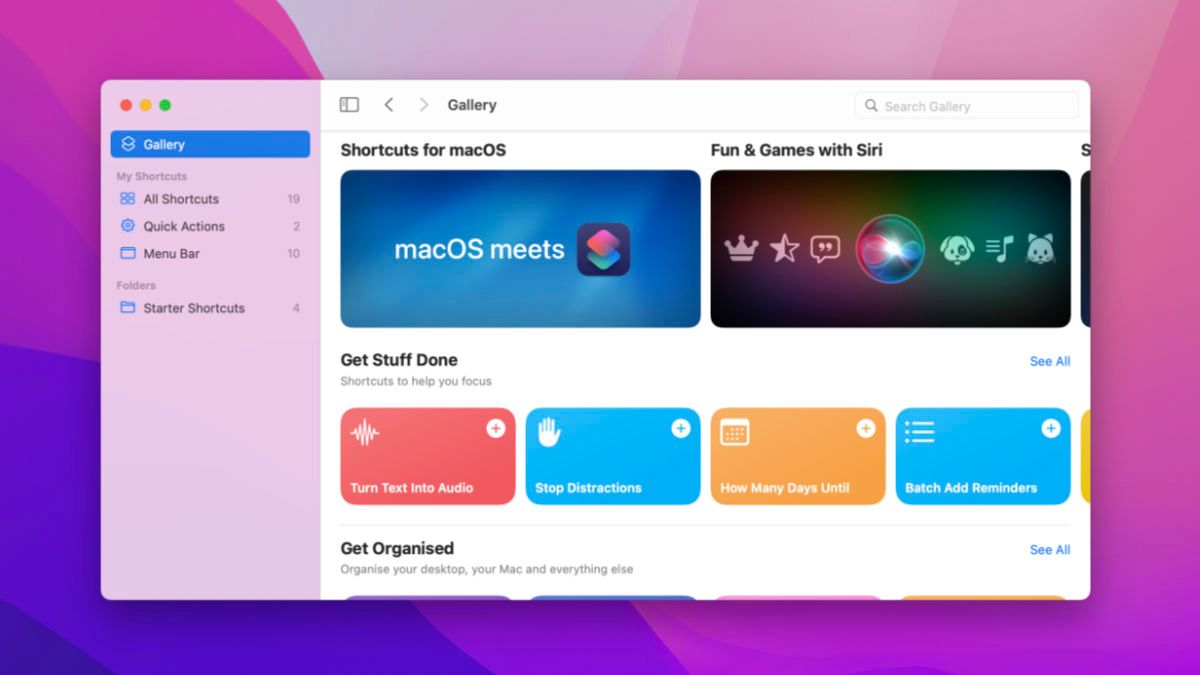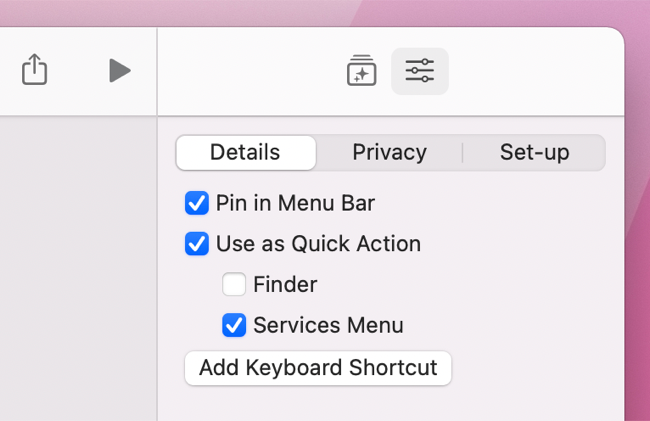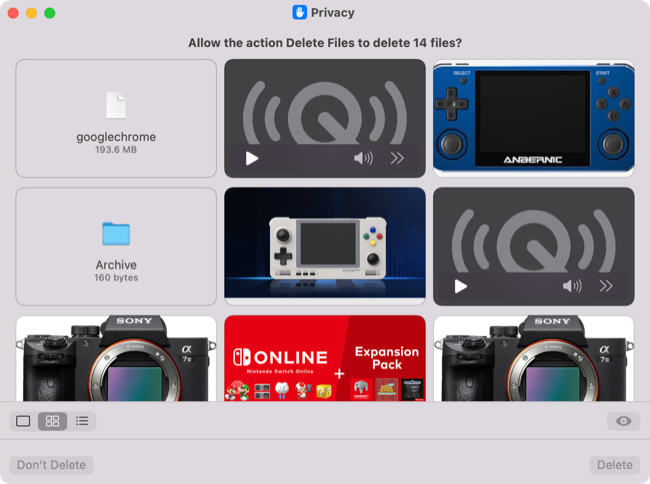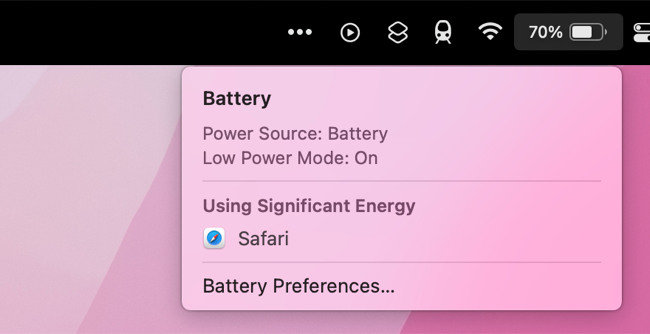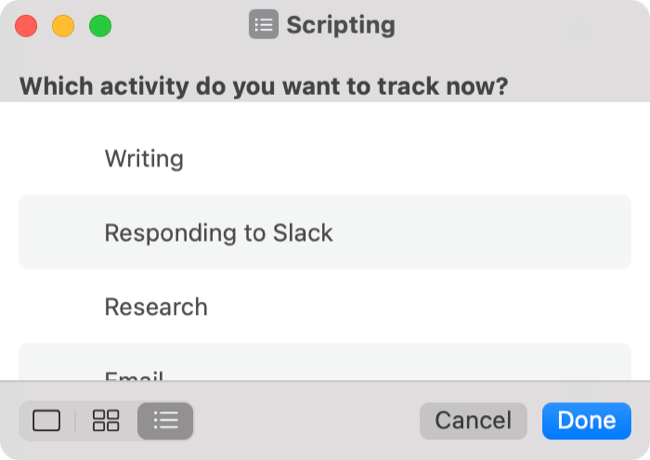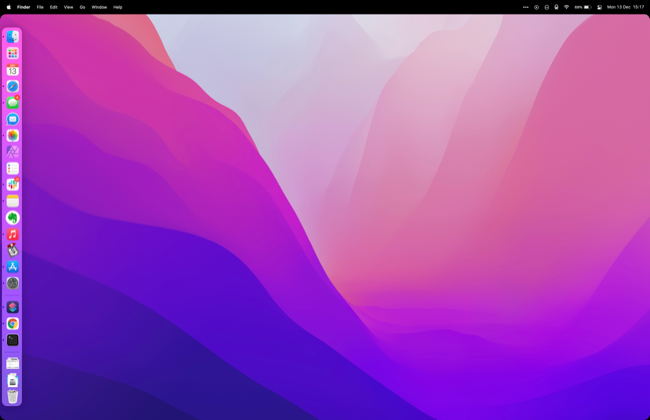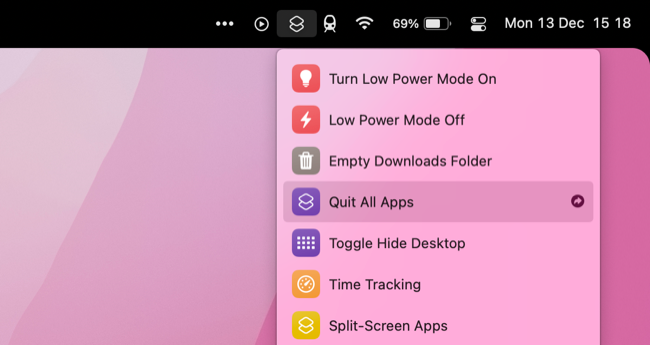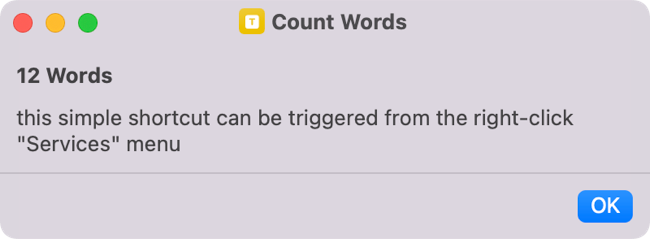Quick Links
Apple added the Shortcuts app to macOS Monterey in 2021, making it easy to build workflows using visual coding blocks just like you can on iPhone and iPad. While the feature still lacks the power of Automator or AppleScript, it's still pretty useful.
Here are some example workflows to get you started, all of which you can edit and duplicate to create your own.
How to Add and Trigger Mac Shortcuts
The shortcuts below link directly to workflows that launch in the macOS Shortcuts app. You can then add them to your Mac with a single click. Most of them were created by users from communities like r/Shortcuts on Reddit and RoutineHub, where they've been shared so that more people can get use out of them.
Many of these are triggered from the Shortcuts menu bar item, while others appear on the right-click Quick Actions menu. You can also trigger them directly from the Shortcuts app if you want, where you can edit existing shortcuts, add more from the Gallery, or delete workflows you no longer need.
1. Quickly Access Keychain Passwords
If you use iCloud Keychain for storing your passwords, you can use this shortcut from u/Krokmou on r/Shortcuts to quickly access your list of saved passwords from both iOS and macOS.
You can trigger the shortcut from your menu bar, or open it up in Shortcuts by double-clicking on it then click on "Shortcut Details" in the right-hand pane and use the "Add Keyboard Shortcut" button to assign a keyboard shortcut for even quicker access.
2. Split Screen Between Two Apps
Apple provides many shortcuts like this one in the Gallery, but this one's a bit more open-ended. It allows you to quickly split the screen between two apps, ideal for triggering "work mode" when you're feeling distracted. In its default state, the shortcut will ask you each time which apps you would like to choose.
You can change this behavior by double-clicking the shortcut in the Shortcuts app, clicking on "?App" and choosing an app of your choice. You can also use the "Split Screen Between" action to build your own Shortcuts that do the same thing (as per the screenshot above), just remember to pin it to the menu bar in the "Shortcut Details" panel on the right-hand side.
3. Empty Your Downloads Folder
Trigger this shortcut from your menu bar to quickly erase everything in your downloads folder. By default, the shortcut will ask you whether or not you're happy for the items to be deleted, and it will then move the contents to the Trash.
You can tweak this behavior by opening Shortcuts > Preferences > Advanced and enabling "Allow Deleting Without Confirmation" if you don't want to confirm each time. You can also edit the shortcut and enable "Delete Immediately" under the "Delete [Contents of Folder]" action to skip the Trash.
4. Low Power Mode On and Low Power Mode Off
Reddit user u/MrVegetableMan created shortcuts to toggle Low Power Mode on and off that works using a shell script. You'll need to enable "Allow Running Scripts" under Shortcuts > Preferences > Advanced and grant root access on the first run for this one to work. Once you're done you'll be able to trigger these shortcuts from the menu bar.
You can check your current status by clicking on the battery charge indicator, which will notify you if Low Power Mode is enabled. You can enable Low Power Mode manually but it requires a fair few more clicks than using a simple menu bar shortcut. Learn more about what Low Power Mode does and which models support it.
5. Simple Time Tracking
Curious how long you're spending on a project? This simple shortcut allows you to record multiple activities to a text note in Apple's Notes app. For best results, you'll need to edit the workflow by first adding it, then double-clicking on it to edit it.
Under "List" you'll see items like "One" and "Two" which you can change to activities like "Research" or "Reading" to suit whatever you're tracking (add as many as you like). The shortcut will create a note called "Time Logging Shortcut Data" but if you'd rather save to a differently named note, change this under the "Find [All Notes] where" and "Create Note With" actions to match your own name scheme.
Finally, you can change the layout of the logging data under "Text" at the bottom of the workflow. You can run the workflow from your menu bar shortcut, and it will ask you each time you do so what time you started, how long you spent on the task, and if there are any notes you want to record. Each log will be added to the same note, so it's all in the same place.
6. Toggle Desktop Icons
It's nice to have a clean desktop with no icons visible at all, but this is also a bit impractical since the desktop is a convenient place to dump files, access mounted disk images, and store screenshots.
Now you can quickly toggle desktop icons on and off with this shortcut by user @NCC-1701-A on RoutineHub. It's easily accessible via the menubar, but it requires that you enable "Allow Running Scripts" under Shortcuts > Preferences > Advanced.
7. Quit All Apps
If you're meticulous about closing apps before you restart or put your Mac to sleep, it can be a pain closing each one individually. Use this shortcut to nuke the lot, or consider editing it to add an exception.
You could also change this to a "Quit All Except Safari" shortcut (or an app of your choice) if that's something you find yourself doing often.
8. Count Characters or Count Words
Highlighted by Alexander Kassner on Twitter, this simple shortcut can be triggered from the right-click "Services" menu in just about any app (including Safari). Highlight the text you want to count then choose the shortcut to see the result.
While the original shortcut was designed to count characters, we duplicated and tweaked it slightly to create a shortcut that counts words instead.
More Automation With Shortery
Free macOS application Shortery lets you take macOS Shortcuts to another level. You can use this app to automate many of your workflows, adding triggers for running shortcuts including:
- Starting or quitting apps
- Time of day
- Wake and sleep
- Login and logout
- Global hotkeys
- Dark and light mode transitions
- Power mode
Shortcuts Is on Your Apple Watch and iPhone Too
Shortcuts is becoming a universal part of the Apple ecosystem, with shortcuts available on your iPhone that you can trigger using your Apple Watch.
You can use the same app to create powerful automations that trigger when you do things like open apps, connect Bluetooth devices, or charge your iPhone.

